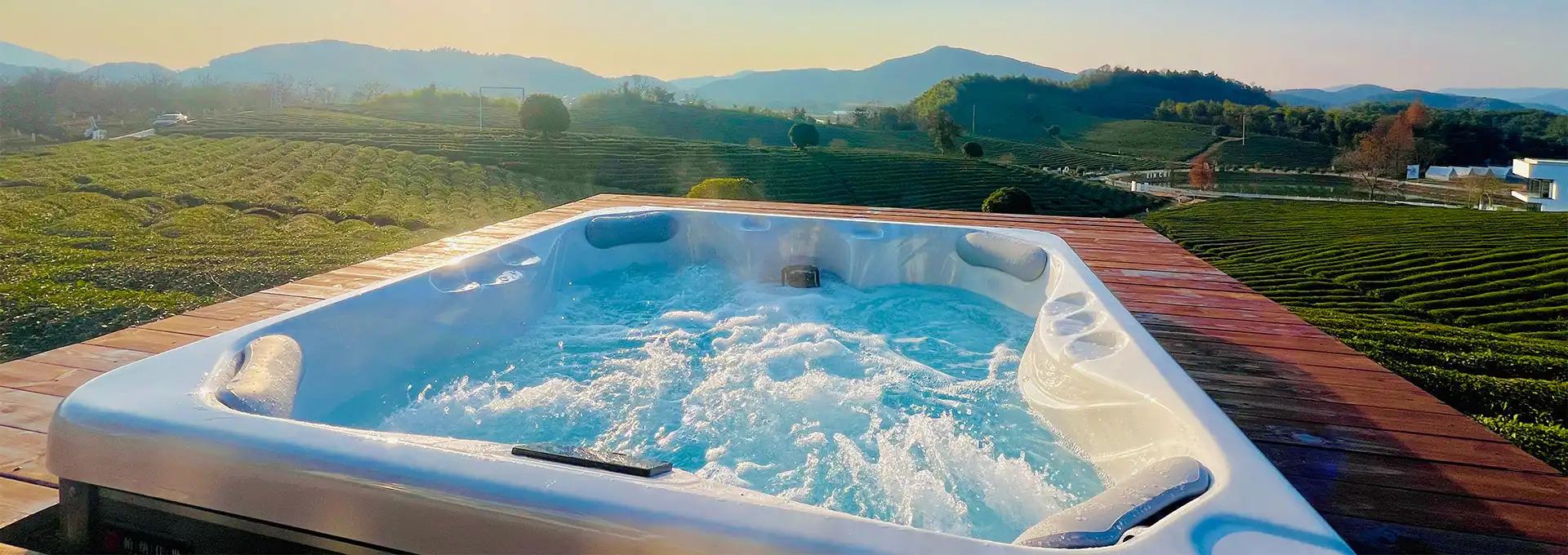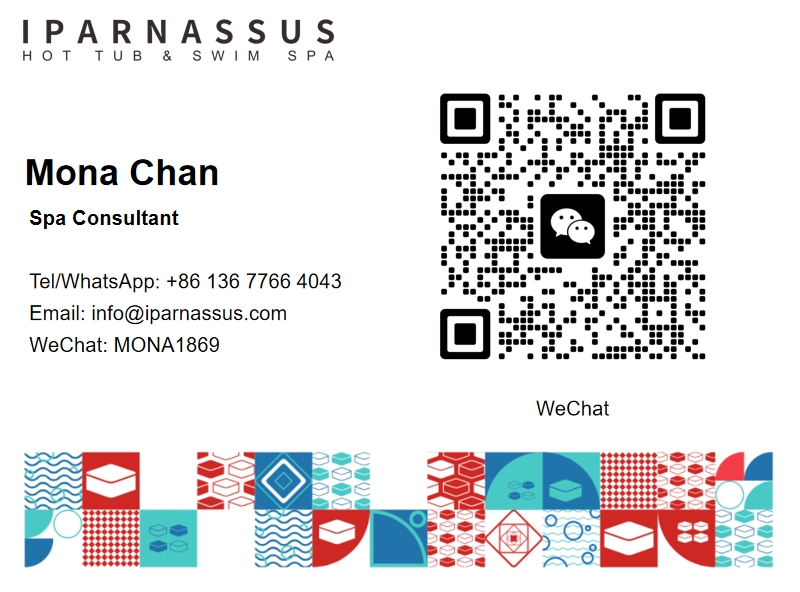How to maintain a cold plunge tub?
2025-05-29 16:03:18
Cold plunge tubs have gained popularity among fitness enthusiasts and those seeking the benefits of cold therapy. These tubs offer a refreshing and invigorating experience, but proper maintenance is crucial to ensure their longevity and hygienic use. In this comprehensive guide, we'll explore the essential steps and best practices for maintaining your cold plunge tub, ensuring it remains a clean and effective tool for your wellness routine.
What are the key steps in cleaning a cold plunge tub?
Daily Maintenance Routine
Maintaining a cold plunge tub requires consistent daily attention to ensure its cleanliness and optimal performance. Begin by skimming the surface of the water with a net to remove any debris, such as leaves or insects, that may have fallen in. This simple step prevents these contaminants from decomposing in the water and affecting its quality. Next, check and adjust the water chemistry using test strips to ensure the pH and sanitizer levels are within the recommended range. For most cold plunge tubs, a pH between 7.2 and 7.8 is ideal, while chlorine levels should be maintained between 1-3 ppm. If necessary, add the appropriate chemicals to balance the water. Additionally, inspect the tub's filter daily and clean it if there's visible debris. A clean filter is crucial for maintaining water clarity and reducing the strain on your tub's circulation system.
Weekly Deep Cleaning Process
A more thorough cleaning of your cold plunge tub should be performed on a weekly basis to maintain its hygiene and efficiency. Start by draining the tub completely, which allows you to clean areas that are normally submerged. Use a mild, non-abrasive cleaner specifically designed for cold plunge tubs to scrub the interior surfaces, paying extra attention to corners and crevices where biofilm can accumulate. Rinse thoroughly to remove all cleaning residues. While the tub is empty, take the opportunity to clean or replace the filter cartridge according to the manufacturer's instructions. Some filters can be cleaned with a specialized solution, while others may need replacement. Before refilling the tub, inspect all visible components, including jets and drains, for any signs of wear or damage. Once refilled, shock the water with a high dose of sanitizer to eliminate any remaining contaminants and rebalance the water chemistry to ensure it's ready for use.
Seasonal Maintenance Tasks
Seasonal maintenance of your cold plunge tub is essential for its longevity and performance throughout the year. As seasons change, so do the demands on your tub. In spring, conduct a thorough inspection of all components, including pumps, heaters, and electrical connections. Clean or replace filters that may have accumulated debris over the winter months. Summer maintenance should focus on protecting your tub from increased UV exposure, which can degrade water quality faster. Consider using a UV-resistant cover when the tub is not in use and adjust your chemical treatment schedule accordingly. Fall is an ideal time to prepare your cold plunge tub for colder weather by checking insulation and ensuring all systems are functioning optimally. If you live in an area with harsh winters, winterizing your tub may be necessary to prevent freezing and damage to the plumbing. This process typically involves draining the tub, blowing out the pipes, and adding antifreeze to any remaining water in the system.
How often should the water in a cold plunge tub be changed?
Factors Affecting Water Change Frequency
The frequency of water changes in a cold plunge tub depends on several factors, making it essential to understand your specific usage patterns and environmental conditions. Usage intensity is a primary factor; tubs that see heavy daily use will require more frequent water changes than those used occasionally. The number of users also plays a role, as more people mean more contaminants introduced to the water. Environmental factors such as outdoor placement, exposure to debris, and ambient temperature can affect water quality and evaporation rates, potentially necessitating more frequent changes. The efficiency of your filtration and sanitation system is another crucial factor. Advanced systems may extend the time between water changes, while basic setups might require more frequent refreshing. Additionally, the type of sanitizer used (chlorine, bromine, or alternative systems) can influence how long the water remains balanced and clean.
Recommended Water Change Schedule
While individual circumstances vary, a general guideline for changing the water in a cold plunge tub is every 3 to 4 months. However, this schedule should be adjusted based on the factors mentioned earlier. For tubs with heavy use or multiple users, monthly water changes might be more appropriate to maintain optimal hygiene and water quality. On the other hand, tubs with advanced filtration systems and limited use might extend to 6 months between changes. It's crucial to monitor water quality regularly using test strips and adjust your schedule accordingly. Signs that indicate a need for a water change include persistent cloudiness, difficulty in maintaining proper chemical balance, or a noticeable odor. When changing the water, take the opportunity to perform a deep clean of the tub's surfaces and components. This process not only refreshes the water but also helps prevent the buildup of biofilm and scale, which can harbor bacteria and reduce the efficiency of your cold plunge tub.
Water Conservation Techniques
While regular water changes are essential for maintaining a clean and healthy cold plunge tub, there are several techniques you can employ to conserve water and reduce the frequency of complete water changes. Implementing a robust filtration system is one of the most effective ways to extend water life. High-quality filters, when cleaned and maintained regularly, can significantly improve water clarity and reduce the accumulation of contaminants. Consider upgrading to a multi-stage filtration system that includes mechanical, chemical, and biological filtration for optimal results. Another water conservation technique is the use of enzyme-based products that break down organic contaminants in the water. These enzymes can help reduce the load on your sanitizer and filtration system, potentially extending the time between water changes. Additionally, using a cover on your cold plunge tub when it's not in use can prevent debris from entering the water and reduce evaporation, which in turn helps maintain water chemistry balance for longer periods.
What are the best practices for maintaining water temperature in a cold plunge tub?
Temperature Control Methods
Maintaining the ideal temperature in a cold plunge tub is crucial for maximizing its benefits and ensuring a consistent experience. The most common method for temperature control is using a dedicated chiller system. These systems circulate the water through a cooling unit, effectively lowering and maintaining the desired temperature. When selecting a chiller, consider the size of your tub and the ambient temperature of your environment to ensure it can handle the cooling load. For those in colder climates, a simple timer on the circulation pump may be sufficient to maintain temperature by running cooler nighttime air through the system. Some advanced cold plunge tubs come with built-in temperature control systems that automatically adjust to maintain a set temperature. Regardless of the method used, it's important to monitor the temperature regularly using a reliable thermometer. The ideal temperature for a cold plunge tub typically ranges from 50°F to 59°F (10°C to 15°C), but personal preferences may vary.
Insulation and Energy Efficiency
Proper insulation of your cold plunge tub is essential for maintaining temperature stability and energy efficiency. Start by ensuring that the tub itself is well-insulated, particularly if it's an above-ground model. Many modern cold plunge tubs come with built-in insulation, but older models may benefit from additional insulation material applied to the exterior. The cover of your cold plunge tub plays a crucial role in temperature maintenance. Invest in a high-quality, insulated cover that fits snugly to prevent heat exchange with the surrounding air. Some covers are designed with reflective materials to deflect sunlight, which is particularly useful for outdoor tubs. Consider the placement of your cold plunge tub as well. If possible, position it in a shaded area to reduce the impact of direct sunlight on water temperature. For indoor installations, ensure the room is well-insulated and consider using a dehumidifier to control moisture levels, which can affect the efficiency of your cooling system.
Monitoring and Adjusting Temperature
Regular monitoring and adjustment of your cold plunge tub's temperature are essential for maintaining its effectiveness and efficiency. Invest in a reliable digital thermometer that can provide accurate readings of your tub's water temperature. Check the temperature at least once daily, preferably at the same time each day, to establish a baseline and identify any fluctuations. If you notice consistent temperature increases, it may indicate issues with your cooling system or insulation that need to be addressed. Many modern cold plunge tubs come equipped with smart monitoring systems that allow you to track temperature trends over time and receive alerts if the temperature deviates from your set range. When adjusting the temperature, make small increments and allow time for the water to stabilize before making further changes. This approach helps prevent overcooling or temperature swings that can impact your cold plunge experience. Remember that external factors such as ambient temperature, humidity, and direct sunlight can all affect your tub's temperature, so be prepared to make more frequent adjustments during extreme weather conditions.
Conclusion
Maintaining a cold plunge tub requires dedication and attention to detail, but the benefits of a clean, well-functioning tub are well worth the effort. By following a regular cleaning schedule, monitoring water quality, and maintaining proper temperature control, you can ensure that your cold plunge tub remains a refreshing and hygienic part of your wellness routine. Remember to adapt these maintenance practices to your specific tub model and usage patterns, and don't hesitate to consult with professionals for more complex maintenance tasks or troubleshooting. With proper care, your cold plunge tub will provide you with invigorating cold therapy sessions for years to come.
For more information on hot tub installations and our products, please feel free to contact us at info@iparnassus.com.
References
1. Smith, J. (2022). The Complete Guide to Cold Plunge Tub Maintenance. Wellness Journal, 15(3), 45-52.
2. Johnson, A., & Brown, M. (2021). Water Quality Management in Cold Therapy Tubs. International Journal of Hydrotherapy, 8(2), 112-125.
3. Williams, R. (2023). Energy Efficient Practices for Cold Plunge Tubs. Green Technology Review, 10(1), 78-85.
4. Davis, E. (2022). Seasonal Care for Outdoor Cold Plunge Installations. Outdoor Living Magazine, 25(4), 60-67.
5. Thompson, L. (2021). The Science of Temperature Control in Cold Therapy. Sports Medicine Quarterly, 18(2), 95-103.
6. Anderson, K., & Lee, S. (2023). Comparative Analysis of Cold Plunge Tub Filtration Systems. Environmental Health Perspectives, 131(5), 055001.
Send Inquiry
Related Industry Knowledge
- How Can Hotel Hot Tubs Meet the Unique Challenges of the Middle East?
- Are Hot Tub Chemicals Harmful?
- What are the Essential Maintenance Checks for Hotel Hot Tubs in the Middle East?
- How to Move a Swim Spa?
- How to Winterize a Swim Spa?
- What is another name for a hot tub
- Does a Hot Tub Help with Back Pain?
- Should I Only Have One Controller On An Spa?
- How Heavy is a 5 Person Hot Tub?
- Is hot tub good before a game?



